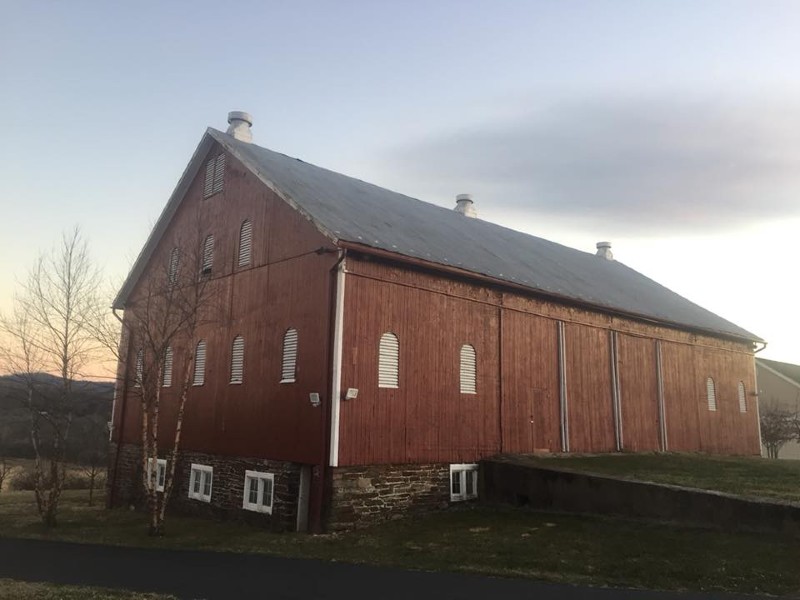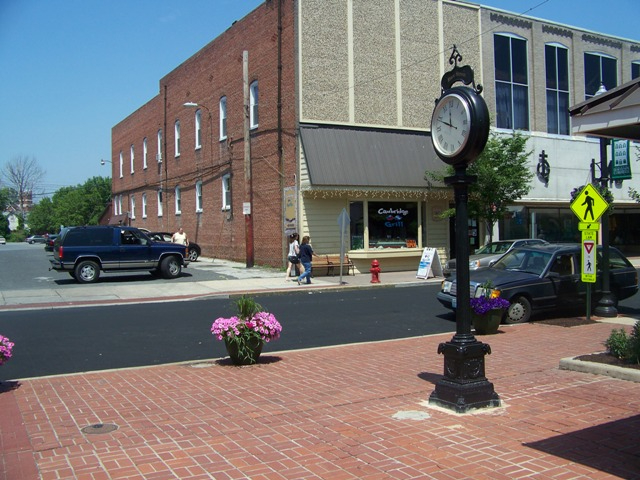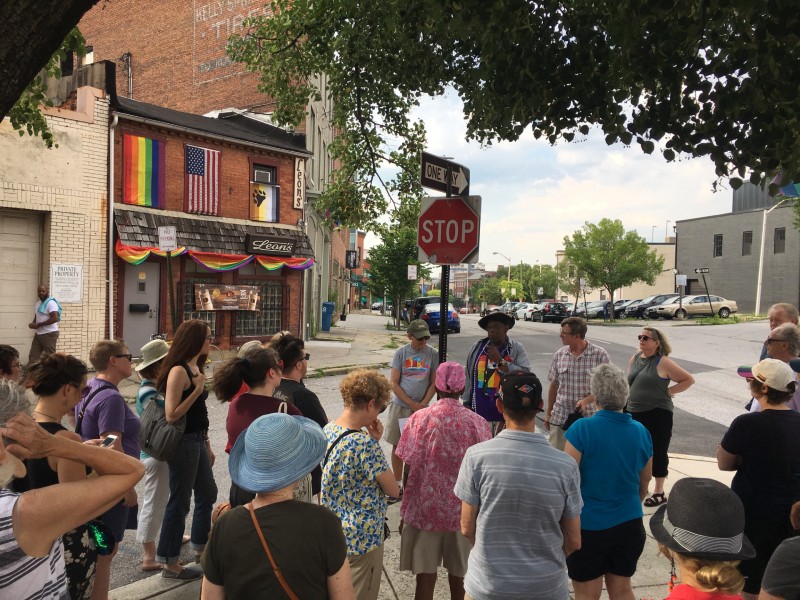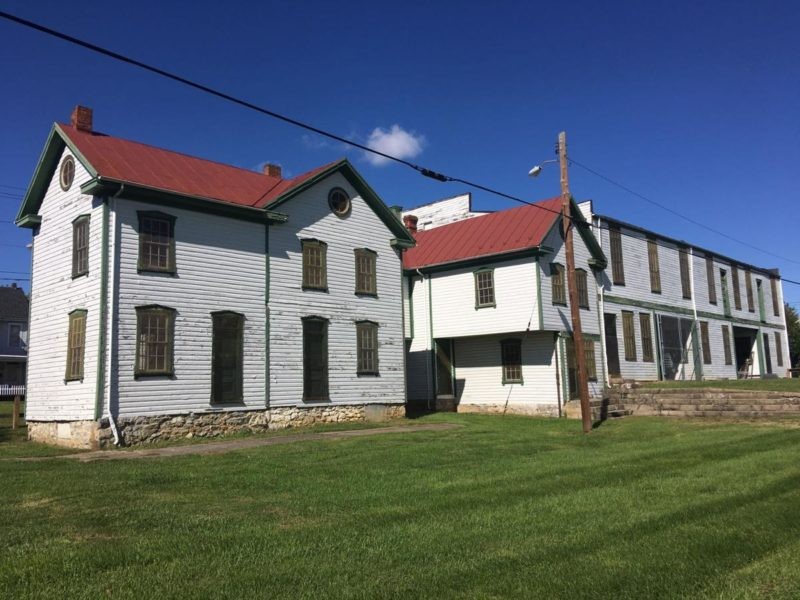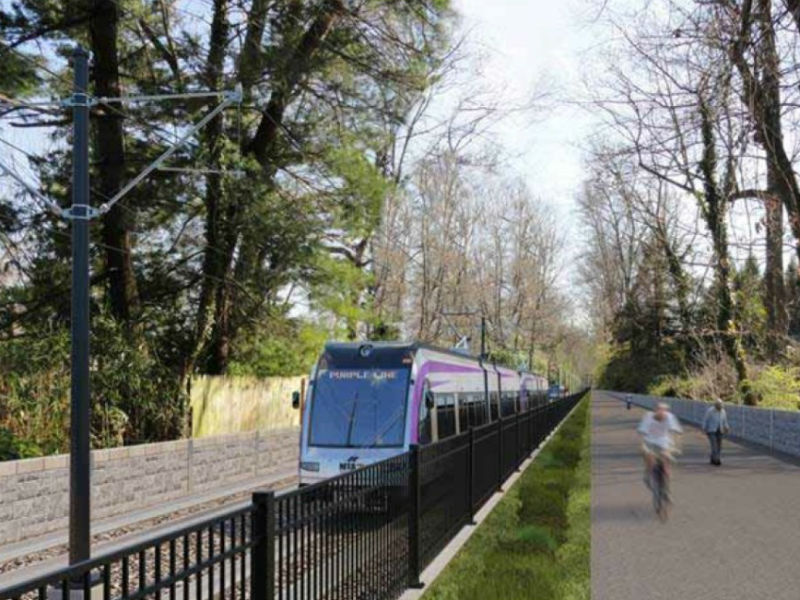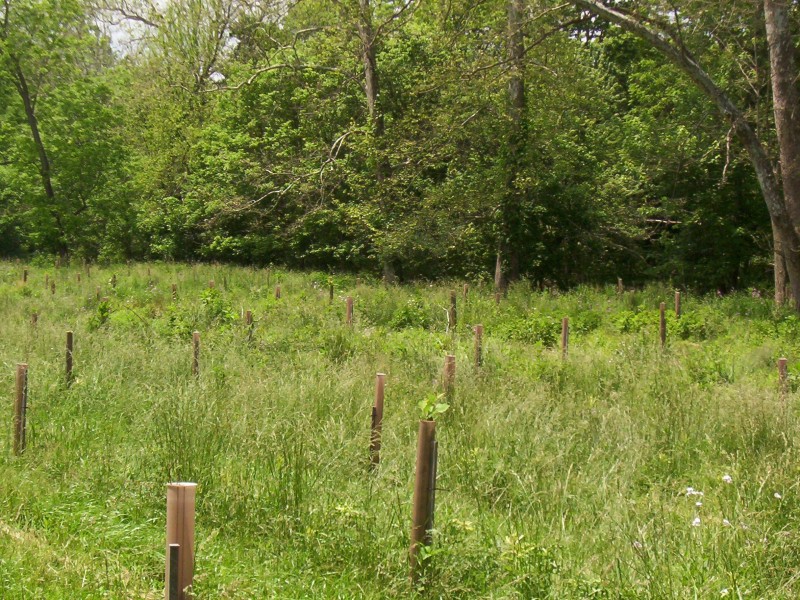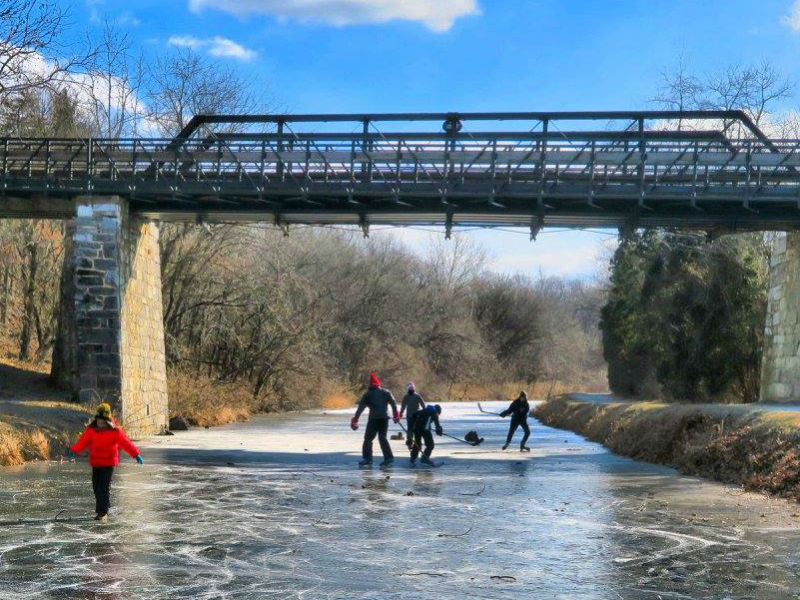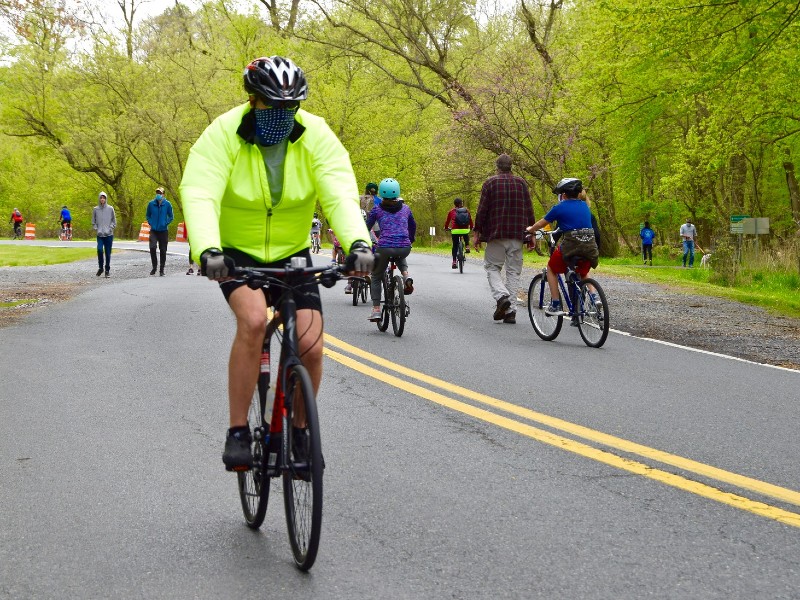Today marks the start of the 442nd Session of the Maryland General Assembly. While this session may not look like those of years past due to Covid-19 precautions, Preservation Maryland stands ready to be the voice of historic preservation in Annapolis. We have a full slate of priorities in support of historic tax credits, economic recovery, community revitalization, preservation funding, and smart growth.
2021 Priority Preservation issues
- Barn at Claggett Center, Frederick, MD. Photo by Dance Holiday.
- 421 Race Street in downtown Cambridge, MD. Photo from Loopnet.
Historic Rehabilitation Tax Credit
The revitalization of Maryland communities is fueled by the Historic Revitalization Tax Credit program. Maryland’s historic tax credit is a ready-made tool for economic recovery in the wake of the coronavirus pandemic. In light of the immense challenges facing Maryland’s economy in the coming months and years, the importance of Maryland’s Historic Revitalization Tax Credit to the financial recovery of the state cannot be overstated. This session, Senator Guy Guzzone and Delegate Stephanie Smith have introduced legislation (SB659/HB865) that will help fund the Small Commercial program of this effective community redevelopment tool.
Economic Recovery and Historic Preservation
We recognize the positive impact that historic preservation projects can have for the surrounding community. Unfortunately, one of the key programs that encourages such projects has been depleted of funding. The Small Commercial Historic Tax Credit program provides essential assistance to small business and developers who are looking to rehabilitate small, Main-Street type historic structures. During the 2019 legislation session, Preservation Maryland, along with our supporters, successfully advocated to eliminate a provision in the program that required a percentage of the rehabilitated structure be dedicated to a commercial use. The program could now be used for the rehabilitation and creation on of residential units to sell to homeowners, including rowhouses.
Unfortunately, because the program has been so successful, it has completely run out of funding, having exhausted the initial $4M authorized amount. It has been the backbone for many Main Street projects across the state and now has the potential to be used to transform vacant houses into vibrant historic homes for many for whom home ownership had long been out of reach. But, without more funding to the program, these shovel-ready projects will not be able to move forward.
The forthcoming legislation will extend the life of the program that encourages private investment in historic revitalization project by increasing the authorization for the Small Commercial Historic Tax Credit Program by an additional $1M. While this amount does not come close to addressing the present need of shovel-ready projects across the state, it will help keep the program active.
HISTORIC TAX CREDITS WORK FOR MARYLAND
Unlike the Small Commercial program, the Competitive Commercial Historic Revitalization Tax Credit program must receive funding in the state budget every year. As of FY21, Maryland has invested only $9M for the year for the entire state. By comparison, Virginia invests nearly $100M annually, and West Virginia invests $30M. Maryland is falling behind.
Since its creation in 1996, this 20% tax credit program for the rehabilitation of historic structures has invested over $400 million in brick-and-mortar commercial redevelopment projects across nearly every jurisdiction in the state, created nearly 30,000 jobs, and yielded nearly $3.5 billion in economic activity.
As the state is faced with a staggering decrease in tax revenues, it’s worth noting that, according to a recent report from the Abell Foundation, the state Historic Revitalization Tax Credit generates positive revenue for the state and increases local property tax revenues. When buildings are rehabilitated, they pay more in local taxes which support better schools, roads, and healthcare without the need for more state dollars.
Preservation Maryland and our supporters have worked diligently to make policy changes to strengthen this essential revitalization tool. Unfortunately, without more funding for the program, those positive changes have little opportunity to make the intended impact for communities across Maryland. We will not know what Governor Hogan’s FY22 Budget will include for this key preservation program until it is released on January 20, but we stand ready to defend any included funding and to fight for an increase.
Budget Priorities
While the state of Maryland may not be in as dire economic straits in the midst of the Covid-19 pandemic as originally predicted, there are still major challenges facing the FY22 Budget. Every year the Governor presents a Capital and Operating Budget that the General Assembly must then work with and pass by the end of session in April. Unfortunately, in past tight economic years, preservation programs have often become the victims of budget cuts, so protecting essential funding for preservation grant programs is a priority for Preservation Maryland over the coming session.
- Walking tour supported by Maryland Preservation Non-Capital Grant Program.
- Hagerstown Fairgrounds Entrance Building & Keeper’s Residence. Photo from The Herald-Mail.
Preservation Grant Funding
The Maryland Historical Trust’s preservation grant programs had gone completely unfunded since FY10. Because of our advocacy, in FY18, funding was restored to the Capital and Non-Capital grant programs. Current funding continues to be at starvation level, with the need far outstripping the available funds. We must and will do more to support those safeguarding our state’s rich and unique history.
Current Preservation Grant Program Funding: $900k
total FY21 Request: Maintain Funding
- Capital Grant Program (“Bricks & Mortar”)
FY20 Budget: $600k
FY21 Capital Request: Maintain funding
This program funds capital upgrades and repairs to certified historic structures owned by non-profits and local governments. It is operated as a competitively-awarded program with statewide reach and impact. - Non-Capital Grants (Planning & Research)
FY20 Budget: $300k
FY21 Operating Request: Maintain funding
This program is funded via the state operating budget and awards competitive grants for architectural and archaeological research, survey and documentation, public education, and planning projects. The program directly supports local government efforts to preserve places important to their constituents.
African American Heritage Grant Funding
The African American Heritage Grant Program provides direct grant support for capital (bricks & mortar) upgrades and repairs to sites representing Maryland’s African American historical experience. As with the Capital and Non-Capital Grant programs, the grant requests for this program are consistently greater than the funding available.
CURRENT AFRICAN AMERICAN HERITAGE GRANT FUNDING: $1M
TOTAL FY21 REQUEST: Maintain level funding
- Rendering of a Purple Line train, similar to those that could eventually ride on the southern Maryland rapid transit system.
- Trees in Frederick County. Photo from the Maryland Department of Natural Resources.
Smart Growth Legislation
Southern Maryland Rapid Transit Program [SB81/HB414/]
Over the last 25 years, the state has completed five major studies on the feasibility, need, and economic impact of high-capacity, fixed-route transit service to Southern Maryland, and despite the conclusion of every study repeatedly confirming that the Southern Maryland Rapid Transit project would vastly improve the quality of life for Southern Maryland residents, promote economic development consistent with smart growth, and advance the State’s emissions reduction goal, the Maryland Department of Transportation has not moved forward with the project. SB81/HB414 would require the State to complete the necessary steps to complete the Southern Maryland Rapid Transit project and commit the necessary funding.
Maryland sustainable buildings act of 2021 [hb236]
The increase of glass in new building construction in Maryland, and worldwide, threatens to undo energy conservation efforts, costs the state money, and contributes to climate change, while also causing the deaths of an estimated 1 billion birds annually in the United States, who fly into buildings, bridges, and other manmade structures.
This bill would require the Maryland Department of General Services to establish standards for state buildings and those buildings with 51% or more state funding to reduce the amount of energy-inefficient and bird-dangerous glass. Glass greater than 10% of the first 40 feet of building facades and 40% above 40 feet would need to be shaded, screened, or patterned with visible or UV films, frits, or etching. Such standards would reduce energy costs and reduce bird fatalities by more than 90%. Lighting during non-operational night times would also be limited to save energy and reduce bird attraction.
Climate Solutions now Act [SB414/HB583]
This omnibus bill will increase Maryland’s greenhouse gas reduction requirements to 60% below 2006 levels by 2030 and net neutral by 2045. The bill would also task the Commission on Environmental Justice and Sustainable Communities to determine what percentage of all state funds invested in climate change must go to overburdened communities. The bill will also create a work group comprised of IBEW, AFL-CIO, registered apprenticeships, construction laborers, and building tradespeople to make recommendations for workforce development and training for displaced fossil fuel workers. Finally, the bill will enact simple, effective policies to reduce and mitigate emissions including planting 5 million trees by 2030, with 10% to be planted in underserved urban areas of the state.
- Skaters on the C&O Canal in Williamsport, MD. Photo by MJ Clinghan.
- Cylists and walkers on Beach Drive Parkway in Montgomery County, MD, 2020. Photo from Partners for Open Space.
Program Open Space
In 1969, the Maryland General Assembly created Program Open Space through the institution of a transfer tax of .5% on every real estate transaction in the state. Since then the program has been responsible for:
- 319,000 acres of open space for state parts and natural resource areas,
- Creation and funding of the Maryland Heritage Areas Authority and heritage area grants,
- More than 6,100 individual county and municipal parks and conservation areas,
- 31,000 acres of local park land,
- 31 Rural Legacy Areas, preserving 77,000 acres,
- 286,000 acres of farmland under Maryland Agricultural Land Preservation Foundation easement.
The Maryland Heritage Areas Authority is funded by Program Open Space. Preservation Maryland supports full funding of Program Open Space and the Heritage Area Authority, opposes any attempts to shortcut, reduce, or cap the program in any way, and supports the repayment of previous diversions from the fund.

